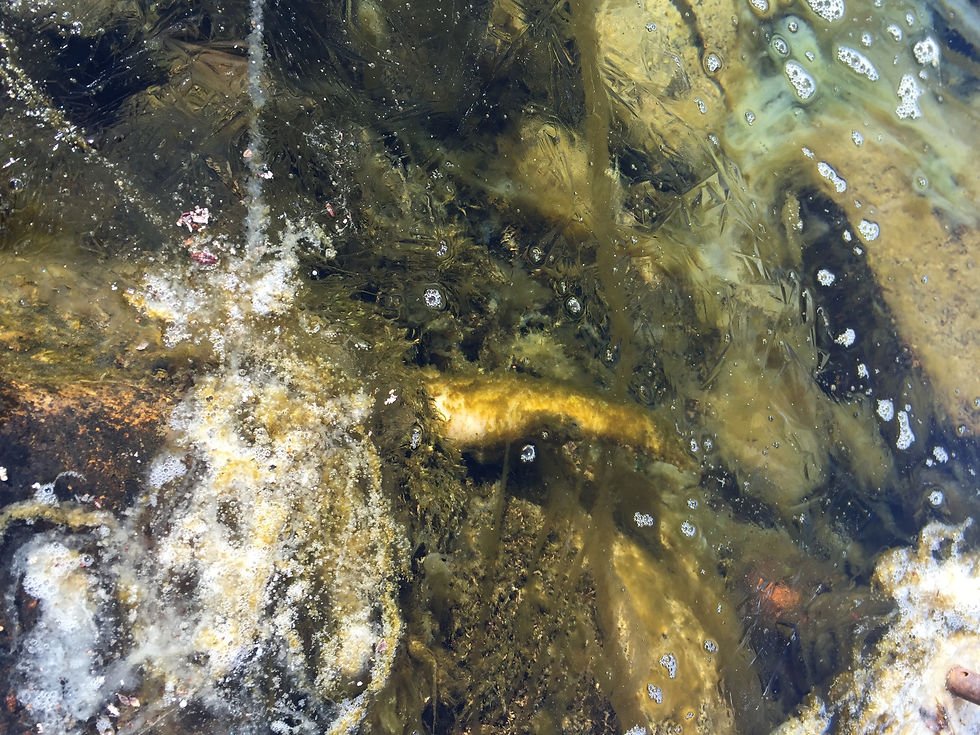Helo Ridin’
- Heidi E Golden
- May 2, 2016
- 2 min read
After an exceptionally early spring thaw last year, which prevented us from reaching many of our research sites via snow machine, the NSF granted us the use of a Robinson R44 helicopter this year to access our sites this spring, snow or no snow. With baby blue skies juxtaposed against a stark white landscape, we took flight from Toolik Field Station to the Upper Kuparuk River to install fish antennas at the headwaters of Green Cabin Lake and the Kuparuk upper spring, a.k.a. KUS pool. Once again, the KUS pool proved a robust overwintering location for Arctic grayling, with fish so thick they churned the water at our approach. Click the YouTube link to see for yourself! With two antennas successfully install on the Kuparuk, we flew a recon. mission over the I-Minus outlet stream and up Jane Creek to locate the source of the antenna-threatening overflow ice we discovered yesterday. Our newest spring is now called the JUS, for Jane Upper Spring (or alternately, Jane Urban’s Spring). Interestingly, so far we have not found another spring that supports overwintering fish comparable to the numbers observed at the KUS pool.

Baby blue skies above snow covered tundra and the mountains of the Brooks Range.

Keeton Molt and Cameron MacKenzie with the R44, preparing for flight.

Cam rides “shotgun” as I squeeze in the back of this tiny chopper. Small but versatile, this helo get us and our gear where we need to go this spring — snow or no snow.

Kup2 antenna: Ready for action!

Cam checks settings on our time lapse/motion sensor camera situated at the Kup3 dry zone.

Keeton and I create ephemeral art in the form of snow angels and…

… snowmen! : )

Gotta give our camera “something” to look at while awaiting ice-out.

Approaching the KUS pool antenna. Click the YouTube link below to see what we found!

Not everyone survives the winter in the KUS pool. Coated with algae and showing signs of decay, I couldn’t resist collecting this stinky fish for its otoliths (earbones), which hold chemical signatures from the waters in which this fish swam while still alive.

Moving to the I-Minus watershed: Massive amounts of overflow ice fill this area, which in summer comprises nothing more than a large boulder field.

Upstream of the overflow, we discover the ice source and name it Jane Upper Spring (or Jane Urban’s Spring), either way it’s JUS for short.

Viewing the aufeis forming spring we discovered yesterday along the I-Minus outlet stream from the air, the I-Minus Lower Spring (IMLS) provides a small oasis for fish and others in a vast and frozen Arctic desert.

Looking up the frozen Itkillik River toward our IM3 antenna and the I-Minus aufeis.

Members of Lab3 now includes Sally McIntyre’s team, as well, with the new Toolik Field Station mug!!




Comments